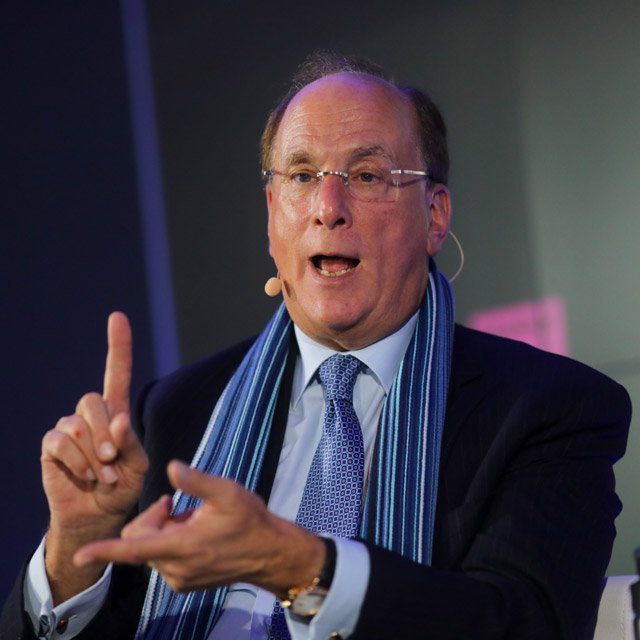How BlackRock Lost $1.7T of Clients' Money

BlackRock Inc. is used to breaking records. The world’s largest asset manager was the first firm to break through $10 trillion of assets under management.
But the bigger they are the harder they fall. And this year BlackRock chalked up another record: the largest amount of money lost by a single firm over a six-month period. In the first half of this year, it lost $1.7 trillion of clients’ money.
BlackRock management was quick to invoke the first-half market carnage when revealing the investment performance last week. “2022 ranks as the worst start in 50 years for both stocks and bonds,” Chairman and Chief Executive Officer Larry Fink said on his earnings call.
While few firms are able to avoid what the market throws at them, some at least try to overcome it. BlackRock is increasingly giving up: At the end of June, only about a quarter of its assets were actively managed to beat a benchmark — rather than track it seamlessly as passive strategies are designed to do.
That’s down from a third when BlackRock acquired Barclays Global Investors in 2009 to become the leading player in exchange-traded funds.
Within the equities business, the divergence is especially pronounced. Across the industry, assets have leached away from active strategies and into passive. In BlackRock’s case, around $21 billion has flowed out of active equity in the past decade, with $730 billion flowing into indexed equity.
The firm’s passive equity holdings are now 10 times larger than its active business, although it does operate some active multi-asset and alternatives strategies that narrow the gap.
Dark Clouds Ahead
For portfolio managers on the fixed-income side, the evolution of the business portends an ominous future.
BlackRock’s roots lie in active fixed income. Fink founded the company in 1988 around strategies that “emphasize value creation through security selection…and are implemented by a team of highly qualified portfolio managers employing a strictly disciplined investment process,” according to the 1999 listing prospectus.
Although the firm also launched the first US-domiciled bond ETF in December 2002, it didn’t catch on the way stock ETFs did. In BlackRock’s case, $280 billion has continued to flow into active fixed income in the past 10 years.
Fixed income is the biggest slug of what’s left of the firm’s active-management businesses — it had $954 billion of actively managed bond funds as of June 30, compared to $393 billion of actively managed stocks. Passive has grown, but it’s only 1.5 times bigger than active in fixed income – a much smaller gap than in equity.
All that may be about to change. The collapse in bond markets this year has shaken money out of active fixed-income funds.
BlackRock saw clients pull more than $20 billion during the first half of the year in a rout that has seen over $200 billion leave the industry. Some of that is rolling into passive funds, in particular ETFs, where BlackRock is picking up more than its fair share.
So far this year, it has gained $39 billion of new money in ETFs and $25 billion in other indexed strategies. The shift toward passive that started in equity is now accelerating in fixed income.




